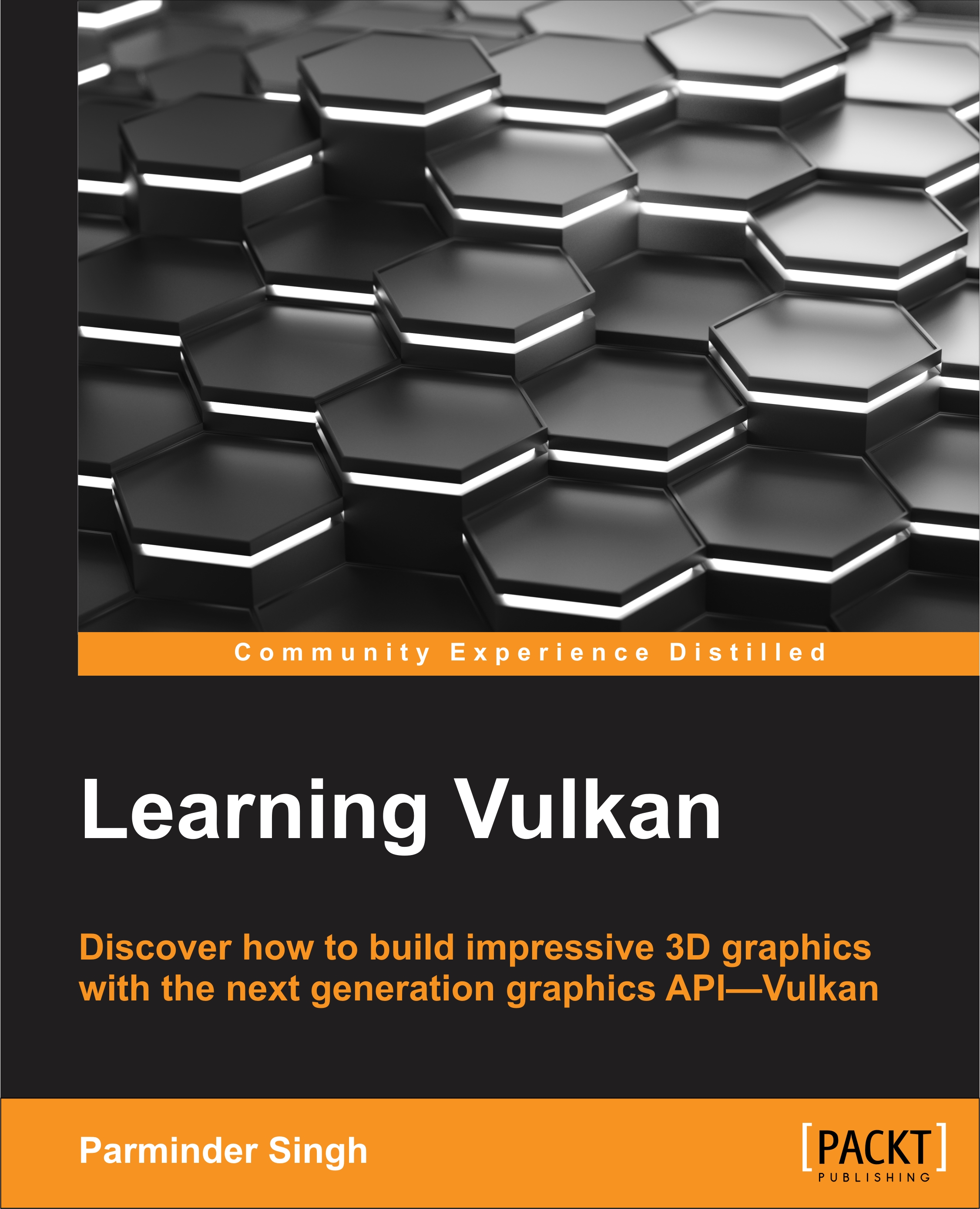Chapter 9. Drawing Objects
In the last two chapters, we implemented the Render Pass instance and displayed swapchain images with specified background colors. In the previous chapter, we put various pipeline states together along with Render Pass in the graphics pipeline. In this chapter, we will put all previous implementations together to build the first Hello World! program in Vulkan and display our first rendering object on the display output.
This chapter thoroughly covers the process of drawing objects in Vulkan; it comprises recording and executing the drawing object's command buffers. The recording associates the Render Pass, framebuffer, and the pipeline together with the viewport and geometry data. Command buffer execution involves submitting the command buffer in the device queue and presenting the drawn swapchain image onto the presentation engine. Toward the end of this chapter, we will discuss various synchronization primitives available in the Vulkan API.
In this chapter, we...























































